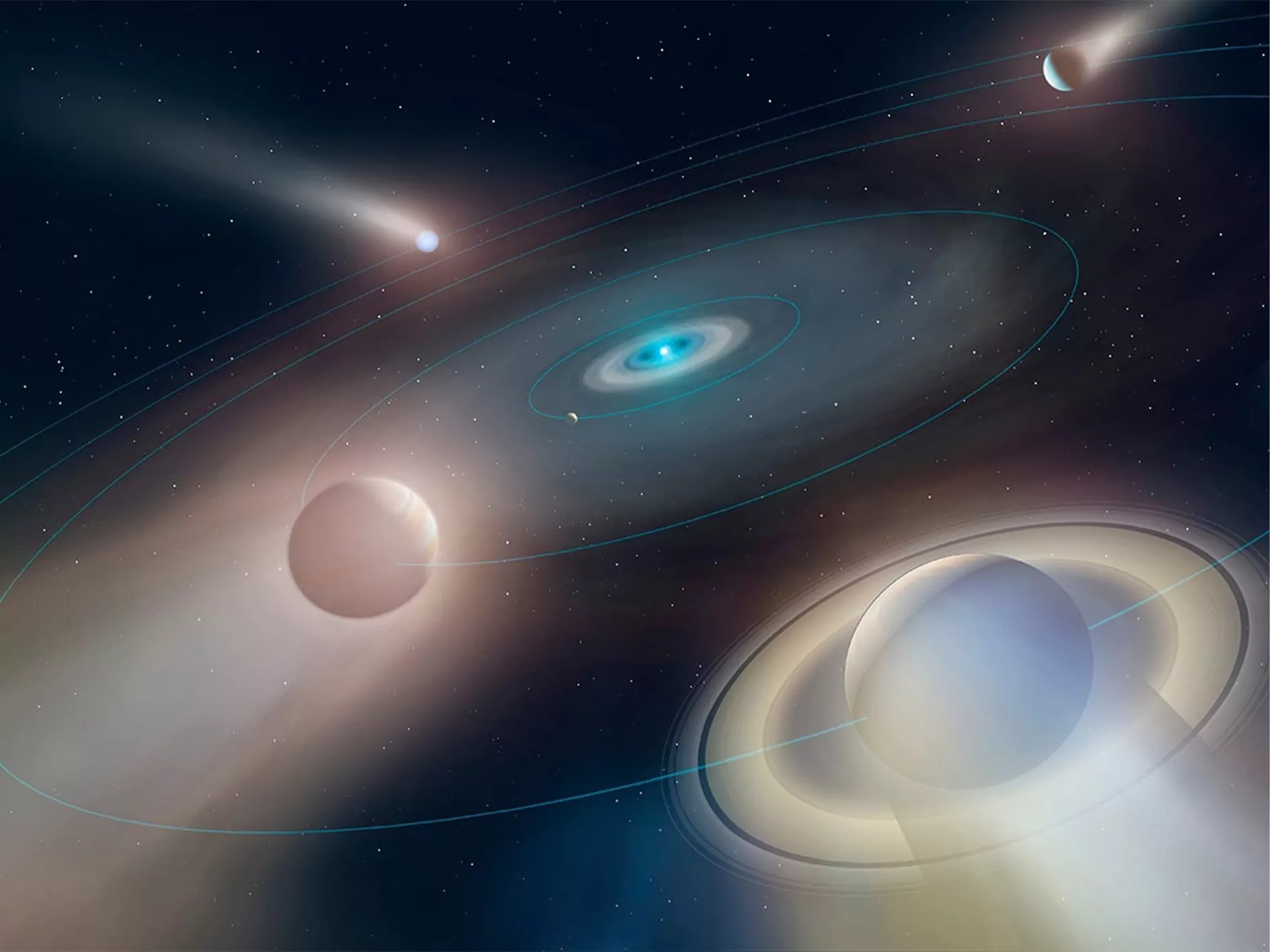According to the scientific council, the results of the research allow us to explain the existence of systems with planets and brown dwarfs orbiting at short distances around the remnants of sun-like stars
Planets whose mass exceeds Jupiter by more than a dozen times, for example, can tear off the outer shell of the star absorbing it, which is in the final stages of its evolution, astronomers said at the 240th meeting of the American Astronomical Society.
According to conservative estimates, «Approximately 5 billion years are left for our luminary, and when our Sun uses up the hydrogen fuel in the core, it will expand and become a red giant, absorbing the inner planets. The possible consequences and dynamics of such events are poorly understood, but it is believed that this is a relatively common fate for most planetary systems with a sun-like star. The work of scientists using hydrodynamic modeling shows that the interaction can lead to a number of results depending on the size of the absorbed object and the stage of evolution of the star,» the authors of the study, presented in the Astrophysical Journal, say.
Evolved stars can be hundreds or even thousands of times larger than their planets, and this size mismatch makes it difficult to perform simulations that accurately simulate physical processes at scale. To get around this problem, astronomers examined a small section of the star centered on the object being absorbed. This made it possible to evaluate the flow around it and measure the effective resistance forces.
«According to calculations, no bodies with a mass less than one hundred Jupiter masses can tear off the shell of a sun-like star before it expands to ten times the radius of the Sun. However, at later stages of evolution and expansion, the stellar envelope can be torn off by an object exceeding Jupiter in mass by only ten times,»
the authors of the study explained
The results of the research make it possible to understand and explain existing systems as they generate with planets and brown dwarfs that rotate at short distances around the remnants of sun-like stars. Previous studies have been based on assumptions that this may be the end result of the planetary absorption process, which included a reduction in the orbit of the absorbed body and the ejection of the outer layers of the star.
«The simulation also showed that planetary absorption can increase the luminosity of a sun–like star by several orders of magnitude for up to thousands of years, depending on the mass of the object and the stage of evolution of the star,»
the authors of the study concluded
